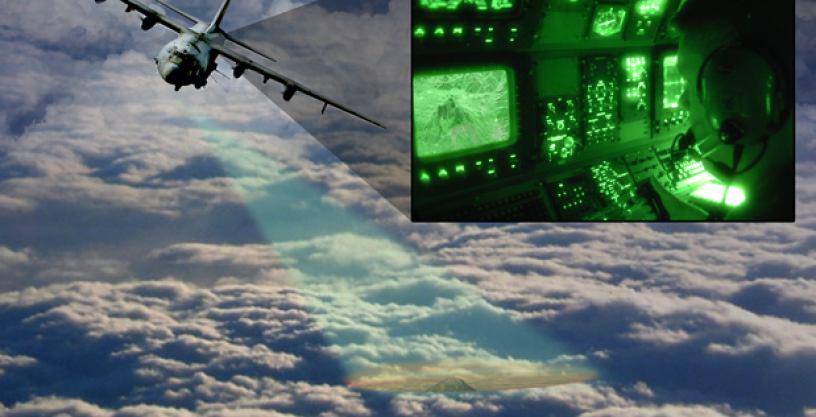Summary

Cloudy skies, dust and other vision-obscuring conditions often limit the support capabilities overhead aircraft can provide warfighters on the ground. Airborne weapon systems that use electro-optic and infrared (EO/IR) sensors during support missions can’t “see” through clouds, and current synthetic aperture radar (SAR) technology can’t provide high-resolution video imagery of moving ground targets through clouds.
DARPA’s Video Synthetic Aperture Radar (ViSAR) program seeks to develop and demonstrate an Extremely High Frequency (EHF) targeting sensor which operates through clouds as effectively as current EO/IR sensors operate in clear weather. The program seeks to develop and demonstrate a cloud-penetrating EHF sensor in a moveable gimbal that could be mounted on a variety of aerial platforms to provide high-resolution, full-motion video for engaging moving ground targets in all weather conditions—cloudy or clear.
The program seeks technology innovations in four technical areas: Compact flyable EHF-band exciters and receivers; compact flyable EHF-band medium-power amplifier; EHF-band scene simulation; and advanced algorithms for EHF-band operation.
Compact flyable EHF-band exciters, receivers and medium-power amplifier should have size, weight and power characteristics to enable the ViSAR sensor to operate using an existing EO/IR gimbal. The EHF-band scene simulation technology effort seeks to develop a synthetic scene model for generating synthetic raw data sets that simulate realistic EHF-band radar data sets. These raw data sets will be used by the system developer to test image formation, autofocus, detection, and geolocation algorithms. Advanced algorithms for EHF-band operation aims to develop and characterize new algorithms that may be enabled by the development of EHF-band SAR, and which have the potential to provide new sensor capabilities or enable more efficient processing.
In 2017 the program conducted flight testing of the ViSAR sensor, which successfully captured real-time video through clouds.
Office
Strategic Technology OfficeThis program is now complete
This content is available for reference purposes. This page is no longer maintained.
